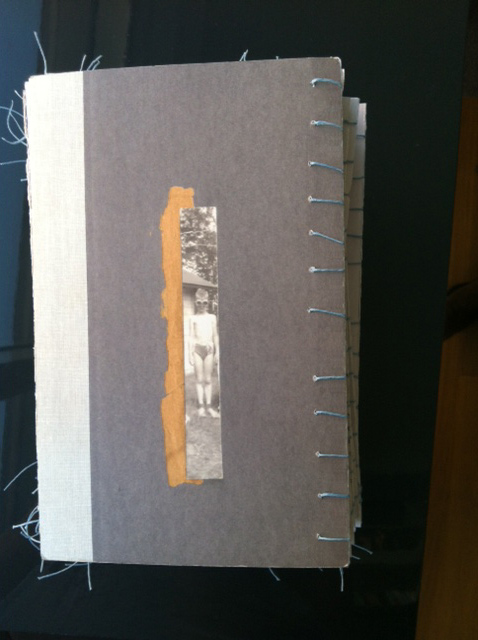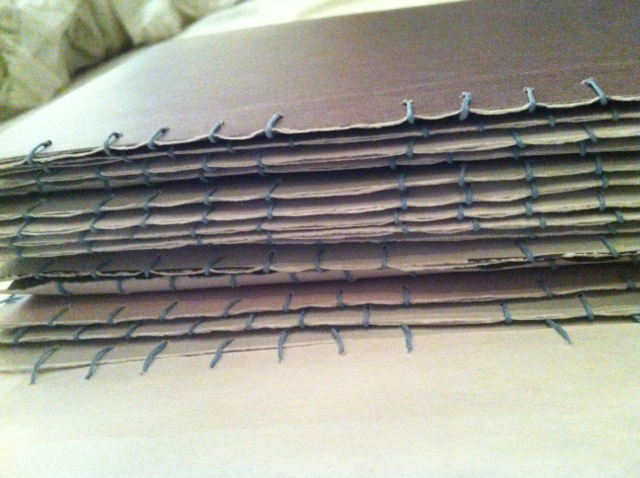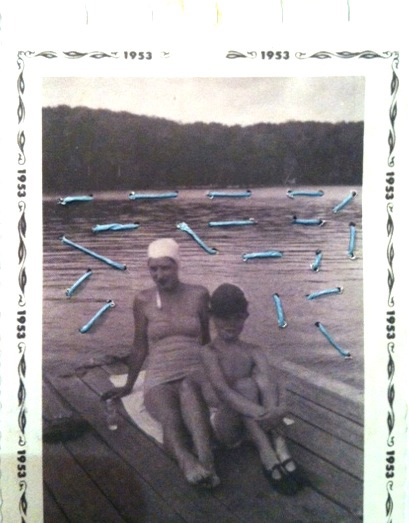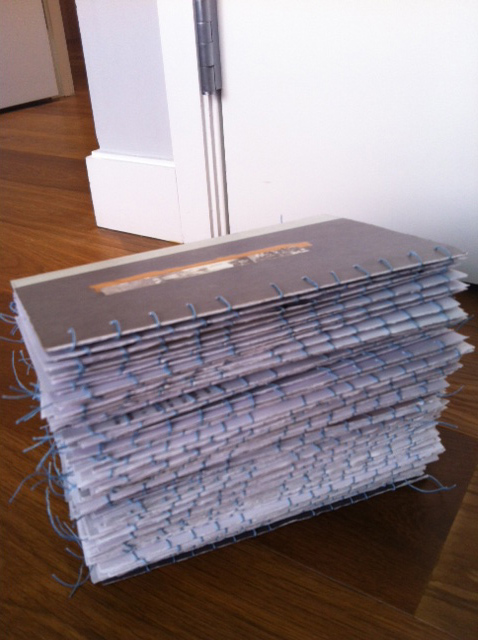And when it’s said that words fly
(like birds that fill an end-
lessly vanishing space)
it’s probably to conceal the fact
that the words are not one
with the world they describe.
– Inger Christensen, from Stage
- During the summer and into the fall of 2012, I deconstructed Anne Carson’s accordion fold book Nox (New Directions, 2010) and sewed it back together using blue thread. Blue for water. I sewed over water references throughout the text – creating a swelled, more spacious version of the book. Bluer, too. I wanted to pay homage to the work while making specific contextual elements evident through structural changes.
- I began to think about writing as an act of creation and destruction. We mark a blank sheet of paper. It is ruined.
- Something grows. Something vanishes.
- Nox is a facsimile of an epitaph that Carson made for her brother.
- I tore Nox page from page until the entirety of the unnumbered, 192 pages were no longer in a connected-accordion-fold shape. Already, the torn edges created a new kind of texture and the book began to expand. The pages barely fit into their box. Paper torn from paper. Light and space separated what was previously joined.
- Water’s faces. It may appear flat. The ocean is a moving body of water. A lake might be stagnant and hot. Floods exist. Water can weigh on clothing. Can make everything heavier. We are weightless inside of it. There are photographs of water in Nox and mentions of it throughout the text – all of which I stitched through with blue thread. When Carson’s brother died, his widow scattered his ashes at sea. One can drift in water. Floating or sinking.
- Carson’s translation (from the Latin) of Catallus 101 – a poem that she refers to several times throughout the text, appears about three-quarters of the way through:
Many the people many the oceans I crossed –
I arrive at these poor, brother, burials
so I could give you the last gift owed to death
and talk (why?) with mute ash.
Now that Fortune tore you from me, you
oh poor (wrongly) brother (wrongly) taken from me,
now still anyway this – what a distant mood of parents
handed down as the sad gift for burials –
accept! soaked with tears of a brother
and into forever, brother, farewell and farewell
- I was worried I’d ruin it.
- I threaded blue texture into watery pages. First, space. Then, light. Finally, thread.
- I wanted to unmake Nox and space a new kind of visual. To calculate an overgrowth. To thread-swell the book. To weave some sea and some sky into page.
- NOTHING VAST ENTERS THE LIVES OF MORTALS WITHOUT RUIN
Space. Ruin. Texture. Overgrowth. Loss. Water. Night.


But the project was one of ruin. I stitched the pages back together at about four minutes per page. I completed a solitarily quiet task while thread-sounds seeped through holes in paper and New York City from below.
Seeped.

– Anne Carson, from Antigonick

Works Cited
Carson, Anne. Antigonick. New York: New Directions, 2012.
Carson, Anne. Nox. New York: New Directions, 2010.
Christensen, Inger. it. New York: New Directions, 1969.